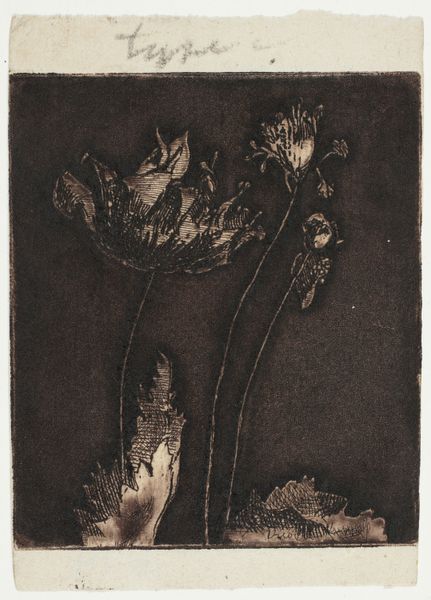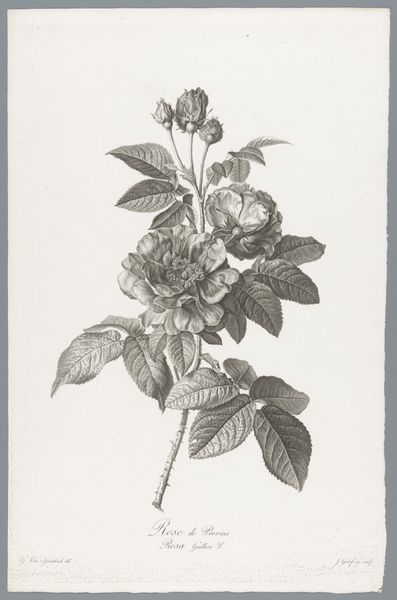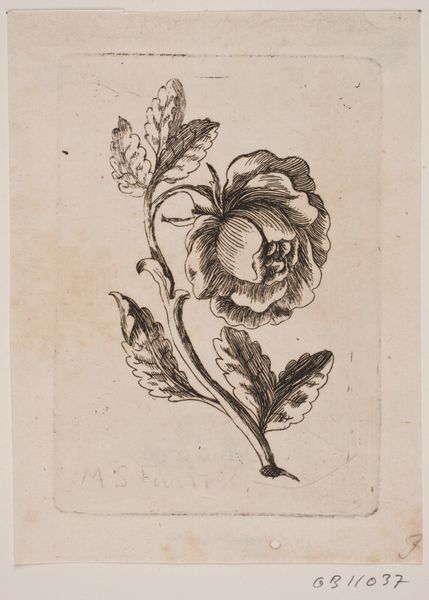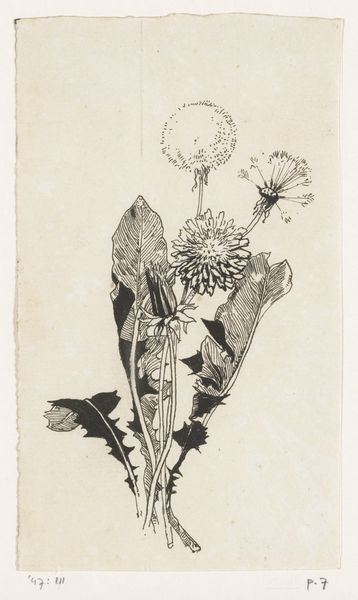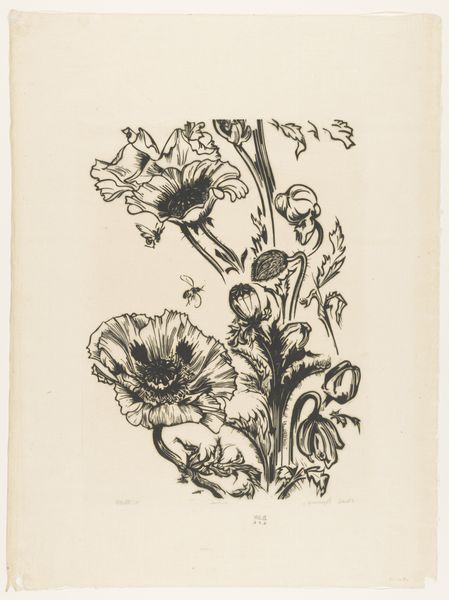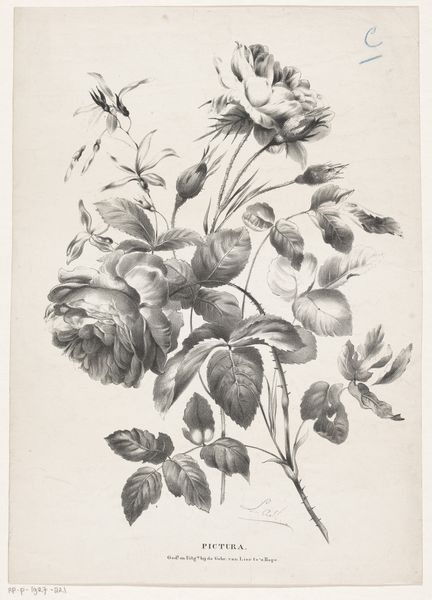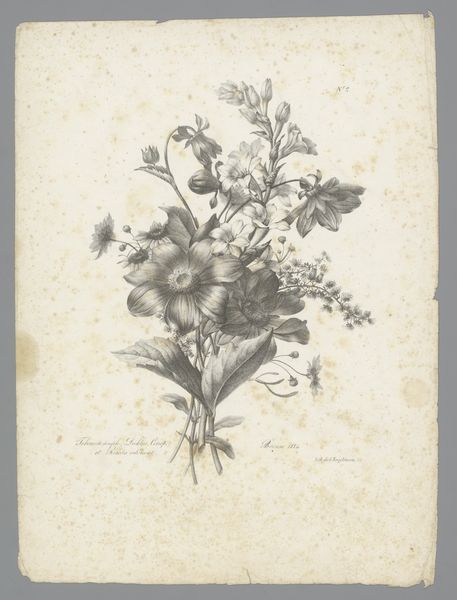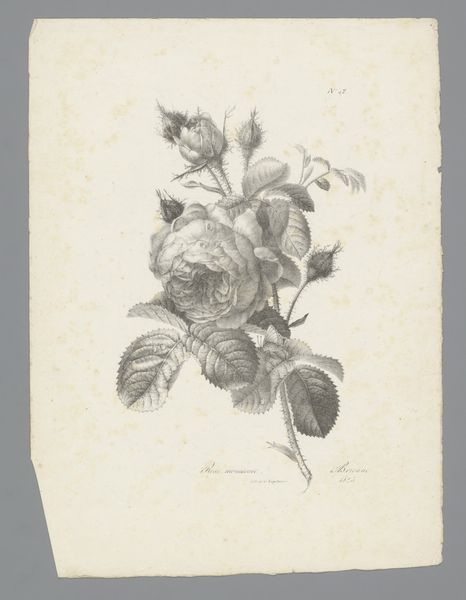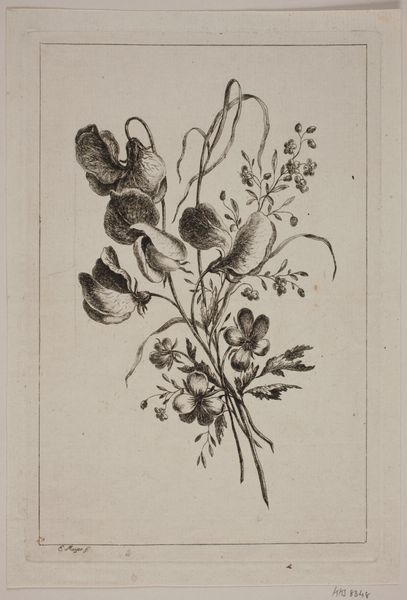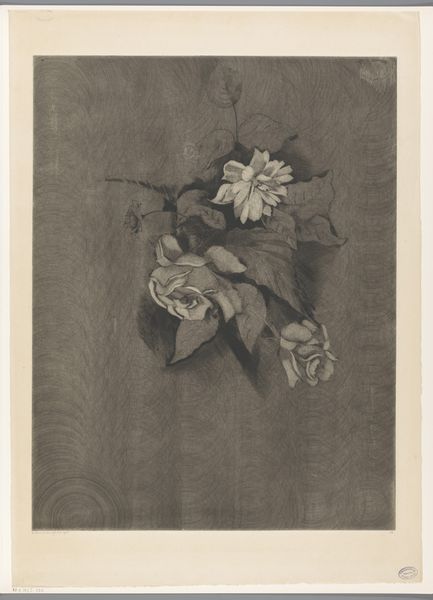
Dimensions: height 388 mm, width 254 mm
Copyright: Rijks Museum: Open Domain
Editor: This woodcut print is titled "Klaprozen met vlinder," or "Poppies with Butterfly," made by Janus de Winter between 1892 and 1951. The strong contrast between black and white gives it a dramatic, almost melancholic feel. What deeper layers do you see in this work? Curator: That melancholic feel is interesting, and I think it arises from a tension. On the one hand, we have these symbols of ephemeral beauty—the butterfly, the poppies. But the woodcut process, especially in such a bold style, immortalizes them in a way, wresting them from the fleeting nature they represent. Consider the historical context. The late 19th and early 20th centuries saw massive social upheaval, rapid industrialization and the growth of the working class. How might de Winter be commenting on the relationship between a disappearing rural past and an increasingly urban future? Editor: So the image is not just about nature, but also a statement about change and loss? The artist immortalizes the flower in a fleeting moment but hints that the poppies won't bloom forever. Curator: Precisely. The butterfly adds another layer of meaning – a symbol of transformation and perhaps even the soul. Symbolism, especially connected to ideas around beauty and mortality, was very prominent at the time. Is the artist alluding to the societal transformations too? Perhaps a visual lament, not just for fading natural beauty but also traditional social orders and values? Editor: I hadn't thought about that connection between natural and societal changes. The starkness of the print style really drives that point home now. Curator: It does. And that starkness makes me consider how the visual language mirrors the social climate of that time. What appears as simply a pleasant image is much deeper than we first thought. Editor: I'll definitely look at prints differently from now on. There's more than meets the eye! Curator: Absolutely! That is what makes them fascinating. Thank you for a stimulating chat.
Comments
No comments
Be the first to comment and join the conversation on the ultimate creative platform.

